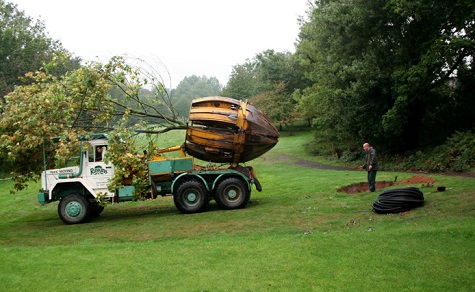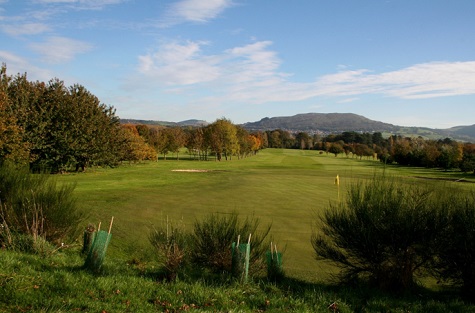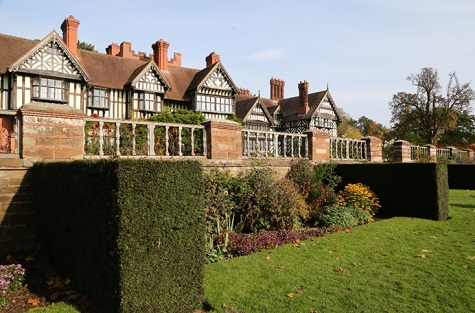This time of year is really the time to complete many of the winter jobs, particularly when it comes to planting trees, hedges and bare root stock.
The best time to plant bare root stock can vary depending on the specific type of tree or hedge you are planting and your local climate. However, as a general rule, the ideal time to plant bare root stock is during the dormant season, which typically falls between late Autumn and early spring.
Planting during the dormant season allows the tree or hedge to establish its root system before the onset of new growth in the spring. This can help the plant better tolerate summer heat and drought stress, as well as improve its chances of survival.

Some specific guidelines for planting bare root stock by season:
Autumn: Late Autumn October/ November is a good time to plant deciduous trees and shrubs, as well as fruit trees and berry bushes. The cooler temperatures and increased rainfall during this time of year can help promote root growth.
Winter: In areas with mild winters, winter can also be a good time to plant bare root stock. Just make sure to avoid planting when the ground is frozen or waterlogged.
Early spring: Early spring is a good time to plant evergreen trees and shrubs, as well as roses and other flowering shrubs. Planting early in the season allows the plant to establish its roots before the weather gets too hot and dry.
Here are some tips to help you successfully plant your bare root trees and hedges:

Choose a suitable planting site: Make sure the planting site is appropriate for the type of tree or hedge you are planting. Consider factors such as sunlight, soil type, and drainage.
Prepare the soil: The soil should be loose and well-drained to allow the roots to spread and grow easily. Remove any weeds, rocks, or debris from the planting area. Before planting, soak the bare roots in water for several hours to help rehydrate them and reduce transplant shock.
Dig a hole that is deep enough to accommodate the roots without bending or crowding them. Make the hole wider than the roots to allow room for the soil to settle, add soil amendments, mix in some compost or other organic matter into the soil to help improve its fertility and drainage.
Place the tree or hedge in the hole and spread the roots out evenly. Make sure the crown (where the roots meet the trunk) is at ground level or slightly above. Fill the hole with soil, gently packing it around the roots. Water the newly planted tree or hedge thoroughly, making sure the soil is evenly moist but not waterlogged.
And finally add some mulch. Spread a layer of mulch around the base of the tree or hedge to help retain moisture and suppress weeds. Avoid piling the mulch against the trunk, as this can lead to moisture buildup and rot.

Depending on the size of the tree or hedge, you may need to provide support such as stakes or ties to help it establish itself. Once you have planted your hedge or trees it is important to regularly monitor the tree or hedge for signs of stress or disease, and water and fertilize as needed to promote healthy growth.
I personally would like us to plant more hedges on our land to increase biodiversity and to create a haven for wildlife.
Which hedgerows are best for wildlife?
Thick hedges with wide bases that provide plenty of cover are best but there should be a variety of shapes and sizes from shaped hedgerows to lines of woods and copses. Hedgerows with large numbers of woody species hold more birds. Trees, particularly oaks, support a rich variety of insects and are good song posts. Old trees often have holes where blue tits, owls and kestrels, as well as bats, can nest.

Dead timber is also a rich source of insect food and should be left in the hedge unless it is unsafe. The greater the variety of shrubs and trees, the better. Different species flower at different times, providing nectar over a longer period, and so will support more insects. They will also supply a variety of fruit and berries over a long period.
Popular hedgerow species include field maple, hazel, plum, crab apple, holly, hawthorn, sweet chestnut, elm, beech, hornbeam, ash, whitebeam, wild privet and spindle. Poisonous shrubs, such as yew and box, are not planted in stock hedges. Beech is not commonly found in farm hedges, since it is attractive to stock.

Both beech and hornbeam retain their leaves throughout the winter when managed as a hedge, shedding them only in spring, when emerging new shoots finally dislodge them, and it is this, along with their lush summer colour, that makes them so popular in parks and gardens.
It was the plant collectors of the Victorian era who brought to this country a whole new variety of plant species that provided new material for landscaping and hedging in many of the Victorian parks and gardens. Over the years, these new species became very popular and widely used in all manner of environments.
The species of hedge has a big influence on the amount of clipping work. Some, such as privet, lonicera, cotoneasters, Leyland cypress and Monterey cypress are very rapid growers, capable of making a decent hedge in four or five years, but they also need most maintenance. Lonicera and privet may need clipping as often as four times each year in order to maintain a formal shape.
Slower-growing hedges, such as beech, yew, griselinia, thuya, lawson cypress, hawthorn, hornheam, berberis, olearia and holly hold their neat look with a single clipping each year.
For a neat, formal hedge you could use Conifer, Laurel (which has the added bonus of white flowers in spring), Privet and Beech or try Holly or Yew for their red berries. Box hedging has suffered considerably in some areas with Box Blight, so check your area carefully before planting this as an option
For security, try thorny plants like Hawthorn or Berberis, which will have the added bonus of flowers and berries.
You might think that hedges are an expensive option. This is not always the case; hedging plants can be bought very cheaply, especially when bought as bare root stock. Bare root material needs to be planted between November and March.
To plant a bare root hedge, first clear the ground of weeds, next dig out a trench of about a spade depth and add well-rotted muck or compost to the soil at the bottom, as this will give the hedge an excellent start and keep it going for many years to come.
The plants can be placed in the trench up to their original soil line, adding soil and incorporating bone meal (for root development) and a slow acting fertiliser. Plant at a distance of between 38-45 cm (15-18"), depending on the variety, and make sure they are well firmed in to avoid movement during winter wind and rain.
In an area where security or vandalism is a problem a temporary fence can be erected alongside the hedge to help nurse it towards maturity, after which it may be taken down allowing the hedge to stand of its own accord.
Next time you are out walking, take the opportunity to admire our wonderful countryside and see for yourself the impact hedges have made over many generations. It is now down to us to continue to properly manage these precious heritage landscape features for future generations to enjoy.